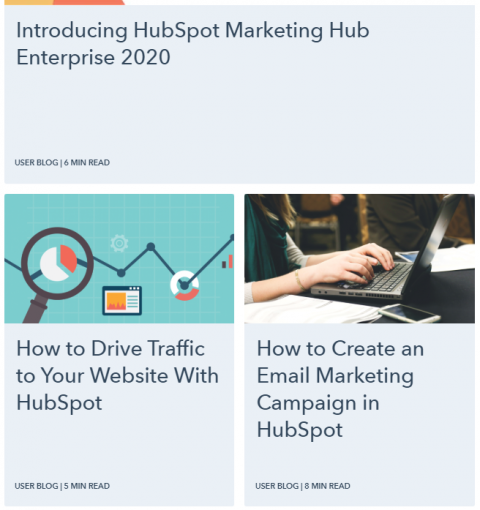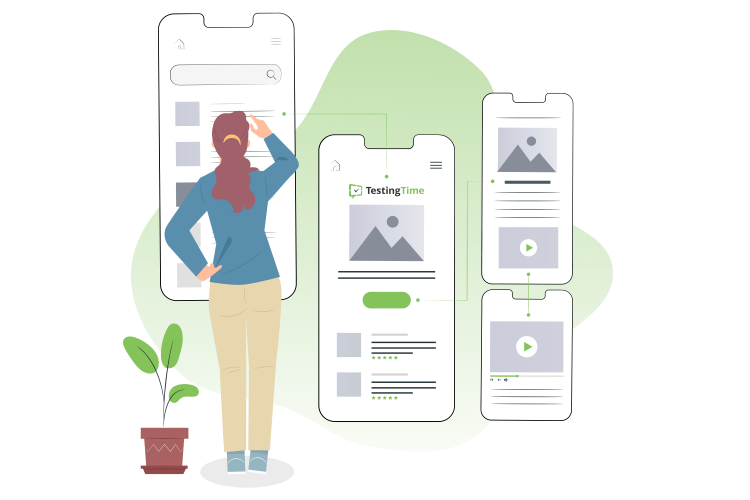Table of contents
1. What is user experience (UX)?
2. Why is UX important?
2.1 It increases conversions
2.2 It strengthens customer loyalty
2.3 It builds social proof
2.4 It reduces costs during the initial launch
3. How you can make great UX a selling point
3.1 Build UX into your brand
3.2 Do it like Amazon
3.3 Make UX a core part of your content strategy
3.4 Nurture social proof that is specifically about UX
1. What is user experience (UX)?
UX is what helps users engage with those benefits. It’s what lets them enjoy your product in a way that is easy and intuitive. The original iPod is a great example of this — thousands of songs, all available at the touch of a button. But unless the listener knows instinctively how to use their iPod, how to navigate to the songs and albums and playlists that they like, and so on, then it’s virtually useless.
Consequently, UX is a strong selling point for prospective customers, especially in this day and age. This applies to any business that sells a product or service, whether physical or digital. Indeed, for digital products, this is especially important — new, innovative tools can be tricky to understand for first-time users, and UX overcomes that difficulty.
2. Why is UX important?
Before we look at how you can make great UX a strong selling point, it’s worth looking at why UX is such an important point to pursue in the first place.
2.1 It increases conversion
Customers today are an impatient bunch. Between increased competition in online spaces and changing consumer tastes, attention spans are decreasing. In terms of websites, for instance, a slow page speed alone is enough to increase bounce rates, keeping customers on-page and engaged with your site.
Consequently, businesses need to work hard to win their attention and keep them hooked. If you can’t hook and retain your audience, then you won’t get the conversions you deserve. This video explains it concisely, and its emphasis on e-commerce is applicable to all businesses.
As the video illustrates, while great content, engaging benefits, perks and benefits, and so on all play a role here, UX is what ties them all together. Positive UX makes experiencing all the myriad benefits and features of your product easier and more accessible.
2.2 It strengthens customer loyalty
Customer loyalty is an essential element to nurture, particularly during the coronavirus crisis. With many brands coming under increased scrutiny for the mistreatment of employees and customers during the crisis, loyalties can waver. Consequently, it’s vital that you take steps to nurture customer loyalty.
If a product or service is tricky and unintuitive to use, customers notice. Customers value familiarity, and if interactions between a user and a product are positive, then they are more likely to keep your brand in mind for the future. UX creates this level of comfort, striving for simplicity and usability and reducing confusion at the same time.
2.3 It builds social proof
You know already that customers share their experiences of a brand. This is largely done online via social but also via word-of-mouth with their friends, family, and associates. When positive, this acts as valuable social proof for a brand, a significant factor when customers are considering a prospective purchase.
UX plays a functional role in nurturing this kind of positive social proof. If a product is accessible and easy to use, people are more likely to recommend it as a result. This is especially true for digital products, where good UX is crucial for helping customers engage with and understand a product. Consider how many times friends have recommended a money-saving app or copy-editing tool to you by noting how easy it is to use — this is a prime example of that.
2.4 It reduces costs during the initial lunch
Launching a new product comes with certain risks. There’s no way to definitely confirm whether it will deliver the ROI you need — but it is possible to increase the chances of it doing so. UX design involves comprehensive user testing, architecture mapping, prototype development, and so on. This helps you iron out any potential flaws during the beta testing phase, determining how functional it will be for the end-user.
Consequently, building great UX into your product or service helps you save money during its initial launch. It helps you identify steps you might need to take to rectify the situation and make the product as intuitive and accessible as it should be.
3. How you can make great UX a selling point
As the points above show, UX offers many benefits for your business. But how do you pursue these benefits and push UX as a selling point to your customers?
3.1 Build UX into your branding
We know now that UX is a strong selling point for customers. A usable product or service that is simple to use and requires as little time to understand as possible is a powerful draw for prospective customers. But tacking on UX as an added benefit doesn’t capitalise on this. Instead, you need to build positive UX as a selling point into your branding itself.
3.2 Do it like Amazon
Plenty of brands do this already. Take Amazon, for instance. The e-commerce giant prides itself on making things simple and easy for its customers. This is reflected everywhere in its branding, from Prime delivery options to optimized product pages for readability. It even extends to the Amazon logo, with the smiley face arrow actually reflecting how easy it is to order from Amazon — as easy as A to Z.

Image credit: Marketplace
This is just an example of course, but it highlights how great UX can be built into your branding itself. It’s worth starting with the basics if you’re looking to integrate UX with your brand essence. This video breaks down the six essential steps to building a successful brand.
The steps include:
- Research your target market and competitors
- Build a business personality
- Choose a business name
- Craft an effective slogan
- Create a strong brand aesthetic
- Design a solid logo
Think about how UX impacts each of these steps.
3.2.1 Create UX that meets your target market’s needs
Your target market might have a particular pain point around a usable product, for instance. This could inform how you highlight your UX in terms that your target market will understand. Or your product might be more straightforward than your competitors. Create a comparison guide that highlights the differences between you and your competitors, with UX a key sticking point.
3.2.2 Ensure your brand personality embodies positive UX
Your business name (if you haven’t landed on one already) could be short and concise, reflective of your product’s simplicity. Or it could conjure up relevant imagery — an image of a lemon, for example, could bring to mind the idiom “easy peasy lemon squeezy”. Very simple, but effective nonetheless.
I’ve already touched on how logos can convey UX with the Amazon example, but even your brand aesthetic can reflect this too. Eschew a messy colour scheme and embrace a sleek minimalist style — no more than two or three brand colours and a clean design through your marketing channels.
3.3 Make UX a core part of your content strategy
A diverse content strategy is essential for any brand. From lead generation to customer community development, content helps you bridge the informational gap between business and customer.
3.3.1 Do it like HubSpot
Your content strategy should cover an array of elements, from how-to guides and industry news to customer case studies and behind-the-scenes pieces. But your product or service’s UX can also play a role here, and HubSpot is a fine example of this:
 Image credit: Hubspot
Image credit: Hubspot
HubSpot’s blog is full of useful, simple content that explains how to use its CRM and marketing and sales hub. Note how short the reads are — this illustrates how HubSpot makes its product UX a key part of its content, through sheer simplicity and readability.
3.3.2 Explain your process with behind-the-scenes content
You can embrace the same approach for your own content too. For instance, you could create a behind-the-scenes series that looks at how you incorporated the end-user into the development of your product. Illustrate it with video and experience mapping to help prospective leads understand your process.
By highlighting how your beta testing prioritised the user, you demonstrate to prospective customers that your UX is a core part of your final product, not something added as an afterthought.
3.3.3 Use how-to content to effectively communicate value
In the same vein, you could also create simple how-to guides to help new and prospective customers better engage with your product. Similarly, as well as serving as instructional guides, these also outline how simple and easy-to-use your product is, even before your audience has experienced your product firsthand.
3.4 Nurture social proof that is specifically about UX
I’ve already touched on the value of UX as something that encourages social proof, but in addition, this can also be used to use UX as a selling point too. Social proof can be sourced passively. As I mentioned earlier, customers often turn to social media to share their experiences with a brand.
3.4.1 Ask your customers for reviews
But you can (and should) actively encourage social proof from your customers as well. This can come in an array of forms — customer UGC post-purchase, reviews on third-party websites such as Trustpilot, or even video interviews.
Indeed, actively sourcing social proof also gives you an opportunity to highlight certain elements of your product. Therefore, it lets you subtly nudge your customers in speaking about and praising the desired aspects of your product — in this case, its UX.
3.4.2 Send satisfaction surveys to highlight UX
One simple way to do this is to send a survey to your customers post-purchase with questions that highlight elements of your UX. Questions could include:
- How long did it take you to start using our product?
- How easy is it to use this product on a day-to-day basis?
- How has this product helped you achieve your desired goals?
These are just a few examples, but they show how you can encourage your satisfied customers to provide feedback about your product specifically about its UX. If you can, encourage customers to send self-recorded videos in which they answer these questions. This gives your social proof an added level of sincerity and authority, by virtue of it being unbranded, at least ostensibly.
3.4.3 Cascade positive social proof across your digital presence
Once you have sourced this social proof, cascade it across your website, and marketing channels. Build it into your product pages in the form of star-reviews or quotes, and include it in your social and email channels. Genuine user-led social proof that specifically highlights your product’s UX is instrumental is organically turning UX into a strong selling point that resonates with prospective customers.
4. Final thoughts
You know now that UX is essential for your product or service, both in terms of benefits to the customer and your business. It bolsters customer loyalty, improves conversions, builds social proof, and reduces costs during the development phase.
But good UX on its own isn’t enough to win you customers. You need to actively use your carefully-developed UX as a selling point. Build it into your branding, create a plethora of content that supports it, and strive for customer-led social proof that conveys your great UX throughout.
If you’re interested in developing UX as a selling point for your product or service, check out these resources below:

